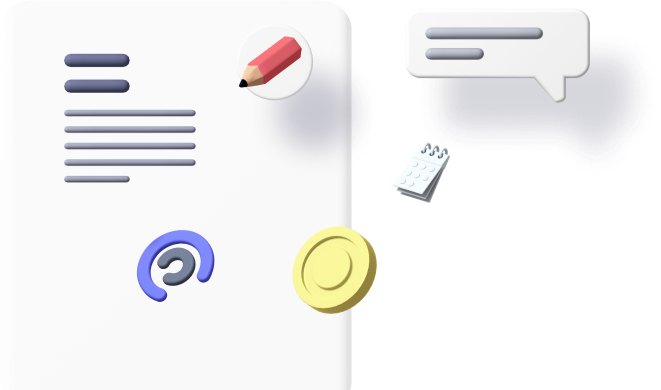In the constantly changing landscape of marketing, companies are frequently left with one crucial decision: Will they spend on traditional marketing or join the fast-paced world of Digital Marketing? Both are equally good and bad, and the decision is based on your business model, your target market, and your budget. In this blog, we will be discussing the primary differences between traditional and digital marketing, their advantages and disadvantages, and guide you through deciding which one is ideal for your company.

What is Traditional Marketing?
Traditional marketing is traditional ways of advertising products or services via offline mediums. They have been in use for decades and consist of:
- Print Ads: Newspaper, magazine, brochures, and flyers.
- Broadcast Media: TV and radio ads.
- Direct Mail: Postcards, catalogs, and letters that are mailed through the postal service.
- Outdoor Advertising: Billboards, posters, and banners.
- Telemarketing: Telephone-based sales of products or services.
Conventional marketing has been the pillar of advertising for decades, particularly prior to the advent of the internet. It’s typically linked with a wider audience and the perception of credibility, particularly among older people.
What is Digital Marketing?
Digital marketing entails advertising products or services through online media and technologies. It encompasses measures such as:
- Search Engine Optimization (SEO): Methods of optimizing websites in order to rank higher on search engines.
- Social Media Marketing: Promoting content on Facebook, Instagram, and LinkedIn.
- Email Marketing: Sending targeted emails to develop leads and customers.
- Pay-Per-Click Advertising (PPC): Placing ads on search engines or social media.
- Content Marketing: Developing blogs, videos, and infographics to connect audiences.
Digital marketing is very measurable, inexpensive, and enables companies to target the exact audience with high accuracy.
Traditional Marketing vs. Digital Marketing: Major Differences
| Aspect | Traditional Marketing | Digital Marketing |
|---|---|---|
| Cost | High (e.g., TV commercials, billboards) | Affordable (e.g., social media advertising) |
| Reach | Widespread but less focused | Extremely focused and worldwide |
| Engagement | One-way communication | Two-way interaction with customers |
| Measurability | Hard to gauge effectiveness | Real-time tracking and analysis |
| Flexibility | Low flexibility (e.g., fixed placement of ads) | High flexibility and adaptability |
| Lifespan | Transitory (e.g., a print ad lasts a day) | Long-term (e.g., a blog entry remains online) |
Advantages and Disadvantages of Traditional Marketing
Advantages
- Broad Reach: Traditional advertising approaches such as TV and radio have a broad reach, including even those with no internet connection.
- Tangible: Physical materials such as brochures and flyers can have lasting impressions.
- Credibility: Most individuals still trust old-fashioned media such as newspapers and TV more than digital advertising.
Cons
- High Costs: Television commercials, billboards, and print media advertisements are very costly.
- Limited Targeting: It is difficult to target certain demographics or interests.
- Difficult to Measure: It is difficult to monitor the effectiveness of traditional advertising campaigns.
Pros and Cons of Digital Marketing
Pros
- Cost-Effective: Online marketing tends to be less expensive than offline tactics.
- Targeted Advertising: You can target certain audiences by demographics, interests, and behaviors.
- Measurable Results: Google Analytics and other metrics give you immediate feedback on how well a campaign is doing.
- Global Reach: Online marketing lets you reach global audiences.
Cons
- Requires Expertise: Quality online marketing demands expertise in SEO, PPC, and other technical aspects.
- Constantly Evolving: The internet changes fast, and businesses have to keep abreast.
- Ad Fatigue: Internet users tend to get bombarded with advertisements, making it more difficult to reach them.

Which One Is the Champ? Traditional Marketing or Digital Marketing?
The choice relies on your business objectives, target market, and budget. If you need to make a decision, here’s a simple breakdown:
Opt for Traditional Marketing If:
- Your target audience is of a higher age group and favors internet-less media (e.g., television, print media).
- You intend to establish brand trust via time-tested mediums.
- You have a local business that depends on local involvement.
Select Digital Marketing If:
- Your customers are technology-literate and active online.
- You have a desire to target the international market or target audiences.
- You require measurable results and greater ROI on your marketing investment.
Can Traditional and Digital Marketing be Used Together?
Yes! Most businesses employ a combined approach to maximize the advantages of both traditional and digital marketing. For instance:
- A business may place a TV commercial to create brand recognition and employ social media commercials to encourage interaction.
- A neighborhood store may pass out leaflets in the community while also placing Google Ads to reach online searches.
Both methods together can produce a balanced marketing campaign that reaches more people and achieves better results.
Real-Life Examples
Traditional Marketing Success
- Coca-Cola: The company’s classic billboards and television commercials have established it as a household name globally.
- McDonald’s: Their outdoor billboards and direct mail coupons have been able to effectively drive customers to their outlets.
Success with Digital Marketing
- Nike: Its influencer marketing and social media campaigns have been able to engage the younger demographic.
- Amazon: Its targeted advertisements and personalized email marketing have generated enormous online sales.
Future Trends: The Move to Digital
Traditional marketing still exists, of course, but the future is most certainly digital. Here’s why:
- Increased Internet Use: More individuals are spending time on the Internet, and digital marketing is a must.
- Data-Driven Decisions: Digital marketing offers actionable data that enables businesses to refine their strategies.
- Personalization: Online channels enable businesses to provide customized experiences to customers.
Conclusion
The debate between traditional marketing vs. digital marketing isn’t about which one is better—it’s about which one is right for your business. Traditional marketing offers broad reach and credibility, while digital marketing provides precision, measurability, and cost-effectiveness. In many cases, a combination of both can yield the best results.
If you’re just starting out, consider your target audience, budget, and goals. For most modern businesses, digital marketing is the way to go, but don’t overlook the power of traditional methods, especially if your audience prefers offline channels. The key is to stay adaptable and keep experimenting to find what works best for your brand.
For businesses in Tirunelveli, digital marketing offers a unique opportunity to connect with local audiences while expanding your reach globally. If you’re looking for tailored digital marketing services in Tirunelveli, explore Digital Marketing in Tirunelveli to find solutions that align with your business goals.



